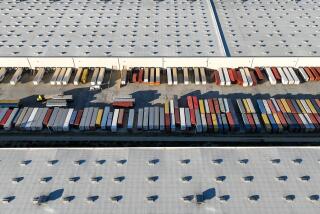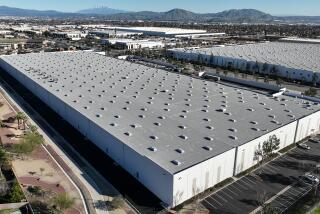Bill Would Bar New Homes at Rocket Facility
- Share via
Future housing development at Boeing’s Santa Susana Field Laboratory near Chatsworth would be prohibited under legislation proposed by state Sen. Sheila Kuehl.
Kuehl (D-Santa Monica) wants to permanently bar housing construction on the scenic hilltop should Boeing ever vacate the property, which is operated by the company’s Rocketdyne division.
Kuehl’s concerns stem largely from a partial nuclear meltdown that occurred at the lab in 1959. Cleanup of radiation and chemical contamination from decades of nuclear research and ongoing rocket-engine testing at the site continues to this day.
In addition to barring residential development, Kuehl’s bill would accelerate cleanup of radioactive contamination and tighten restrictions on disposal of affected materials.
It would also prohibit the sale or transfer of Boeing’s 2,800-acre Santa Susana property until all contaminated soil is removed or determined to be safe.
“I want to protect people from the possibility of radiation poisoning,” Kuehl said.
Her bill is still in the development stages. A Senate committee said last week that the legislation must undergo more revisions before it can come back for a vote. One issue is whether the restrictions should apply to the entire site.
Kuehl’s bill as currently proposed has met with strong resistance from Boeing officials.
“It’s placing an egregious restriction on our ability to determine what we want to do on our property,” said Dan Beck, a Boeing spokesman. “We’ve been engaged in a very extensive cleanup program, cleaning it up to a level that the regulatory agencies say [the property] could be used for residential use in the future.”
Even if the Boeing property is never sold to a developer, Beck said local governments should have final say over zoning and development issues regarding the lab site.
“There are private property rights in this country, and beyond that, local authorities have the right to make zoning decisions,” Beck said. “Where does it end? Next week, maybe it’s something about fuel spills or pesticides on other properties.”
Beck said Boeing has no plans to move its rocket-engine testing facility, but it might do so in the future if it made good business sense. Over the years, residential development has cropped up at the base of the lab on both sides of the county line.
Opened in 1947, the Santa Susana lab had the first nuclear reactor in the United States to produce power for a commercial grid. At the time, the lab was operated by Atomics International.
The plant was crippled by a serious accident in July 1959, when 13 of its 43 uranium fuel rods ruptured or suffered a partial meltdown. The plant was repaired and operated until 1967. But the accident was unknown to the public until 1979, when an anti-nuclear group released records obtained under the Freedom of Information Act.
Department of Energy officials have maintained that radioactive contamination at the lab was quickly contained and did not pose a threat to the public, but the issue has long been a source of heated debate.
Nuclear testing and research were halted at Santa Susana in 1989. Cleanup of the nuclear portion of the site continues and could be completed within five years, officials said.
More to Read
Inside the business of entertainment
The Wide Shot brings you news, analysis and insights on everything from streaming wars to production — and what it all means for the future.
You may occasionally receive promotional content from the Los Angeles Times.










